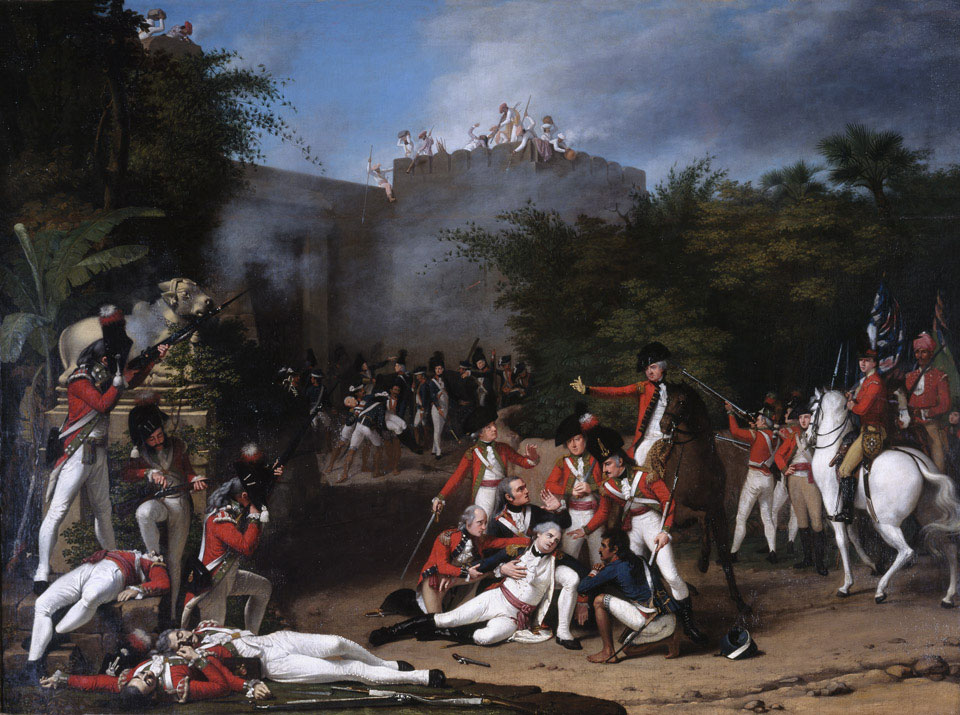|
Major William Douglas (pictured). 91st Argyllshire Highlanders
1804. Government tartan. In the Review Order uniform of a Field
Officer. The background figures are in Marching Order. Original
painting by Douglas N. Anderson. From a contemporary illustration.
Sir William Douglas of Balgillo(1) (c. 1778 – 25 August 1818) K.C.B., was a
British Army officer during the Napoleonic Wars. He was the second son of William Douglas of
Brigton (died 1814), and his wife Elizabeth Graham, daughter of Robert
Graham, 11th of Fintry.
Douglas served at the Cape of Good Hope in 1795(2). He was
promoted to major in 74th Foot on 4 December 1796. He joined the 91st Foot in
1798(3). He was promoted a brevet Lieutenant-Colonel 1 January 1800.
He
served on the Hanover expedition in 1805 and fought in the Peninsular War from
August 1808 to June 1809. While in theatre he was promoted to Lieutenant-Colonel
of 91st Foot on 25 November 1808 and commanded the 1st Battalion from 1808 to
1818. He served in the Walcheren expedition of 1809; again in Iberia and then
France under Wellington from January 1813 to April 1814. He obtained the rank of
brevet Colonel on 4 June 1814 He served in Waterloo Campaign of 1815, during
which he led one of the columns that stormed Cambray on 24 June 1815. Commanded
Pack's Brigade at Toulouse. He was
awarded the Army Gold Cross (one of only 163 so honoured).
Listed as one of the Freeholders of Angus & Kincardineshire, at
Michaelmas 1811 and in 1813
On the 23rd of August 1818 Sir William Douglas died of an illness at
Valenciennes, where his remains were buried, and a monument was erected
over his grave by the officers, non-commissioned officers, and men of
the 91st. The officers also placed a tablet in St. John's Episcopal
Church at Forfar (he was born at Brigton, his father's place in
Forfarshire), which bears the following inscription :
"Jamais
arriere.
" In memory of Colonel Sir William Douglas, K.C.B. This
monument is erected by his brother officers of the 91st, or Argyllshire
Regiment, as a tribute of their respect and esteem for his distinguished
services in the field, and amiable qualities in private life. He fell an
early victim to the duties of his profession at Yalenciennes, in France,
on the 23rd of August, 1818. Aged 42 years. Universally regretted by the
army, and all who knew him."
Notes:
1. Balgillo is a housing development in the Dundee
suburb of Broughty Ferry. The lands of Balgillo had probably been Crown
lands and a thanedom until the time of Robert I. That King gave a
charter to Isabell de Atholia, and Alexander de Bruce, his nephew, of
the lands of Balgillie, within the lands of Thanathers It appears to have been in the ownership of
the Blair family in the 17th C and Gray family in the 16th C. When it
was acquired by the Douglas family is unknown.
2. 74th were in Pondicherry, India, in 1795. Could he have
transferred to the 74th at this tile?
3. A William Douglas is listed as being at The Siege of
Seringapatam (5 April – 4 May 1799) as a Major (with rank from 1795) in the
74th.
Is this our William Douglas?

Captain Douglas of the 74th (Highland) Regiment holds the dying Colonel
Moorhouse at Bangalore, 1791.
In 1787, faced with a renewed French threat to its Indian possessions, the East
India Company raised several new regiments for defence. When that threat failed
to materialise, it refused to pay for these units, or for their transportation
to India. Instead, they were formed into four line infantry regiments in the
British Army.
One of these was the 74th (Highland) Regiment of Foot, formed under
Major-General Sir Archibald Campbell. It was sent to India just two years after
its formation. While there, it fought in the Third Mysore War (1789-92),
including the Battles of Bangalore (1791) and Seringapatam (1792), and the
Second Polygar War (1800-05).
Next, during the Second Maratha War (1803-06), it fought at Ahmednuggar (1803)
and at Assaye (1803), where every officer in the regiment was killed. What was
left of the unit had to be led out of action by its regimental sergeant-major.
The East India Company awarded the regiment an honorary third colour for its 16
years in India, before it finally returned to Britain in 1805.
|


